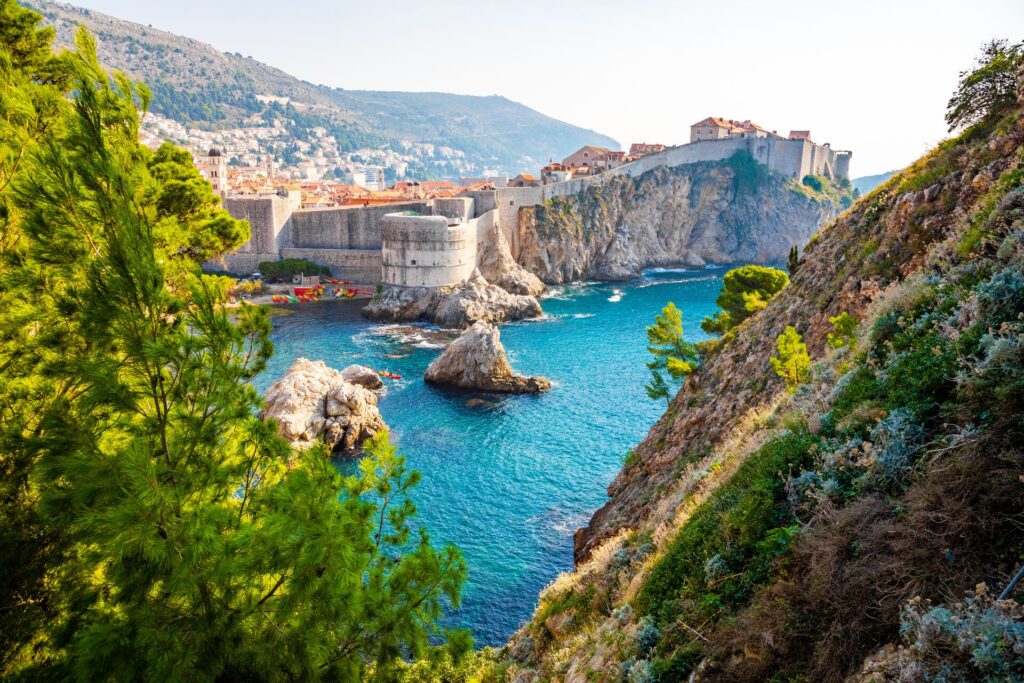Traditional Polish Foods You Must Try at Least Once in Your Life
With summer rain showers and winter temperatures well below freezing, warm and hearty Polish foods are a welcoming sight at any traveler’s table. Though root vegetables, mushrooms, meats, and starches are the hearty hallmarks of Polish cuisine, don’t assume flavor isn’t grown locally. Pickling, spices, salt, and herbs open up a wealth of tastes and textures that delight the globetrotting gourmet as much as they do a humble Polish palate.
Pack your appetite for pierogies, potato pancakes, and pączki on a Polish guided tour with Insight Vacations.
What is Poland’s most popular food?
Poland’s most popular food by far is the pierogi. Pierogies are half-moon-shaped dumplings made from unleavened dough, boiled and often pan-fried. Pierogi fillings can range from mashed potatoes, chives, and cheese, to sausage, mushrooms, and minced meats.
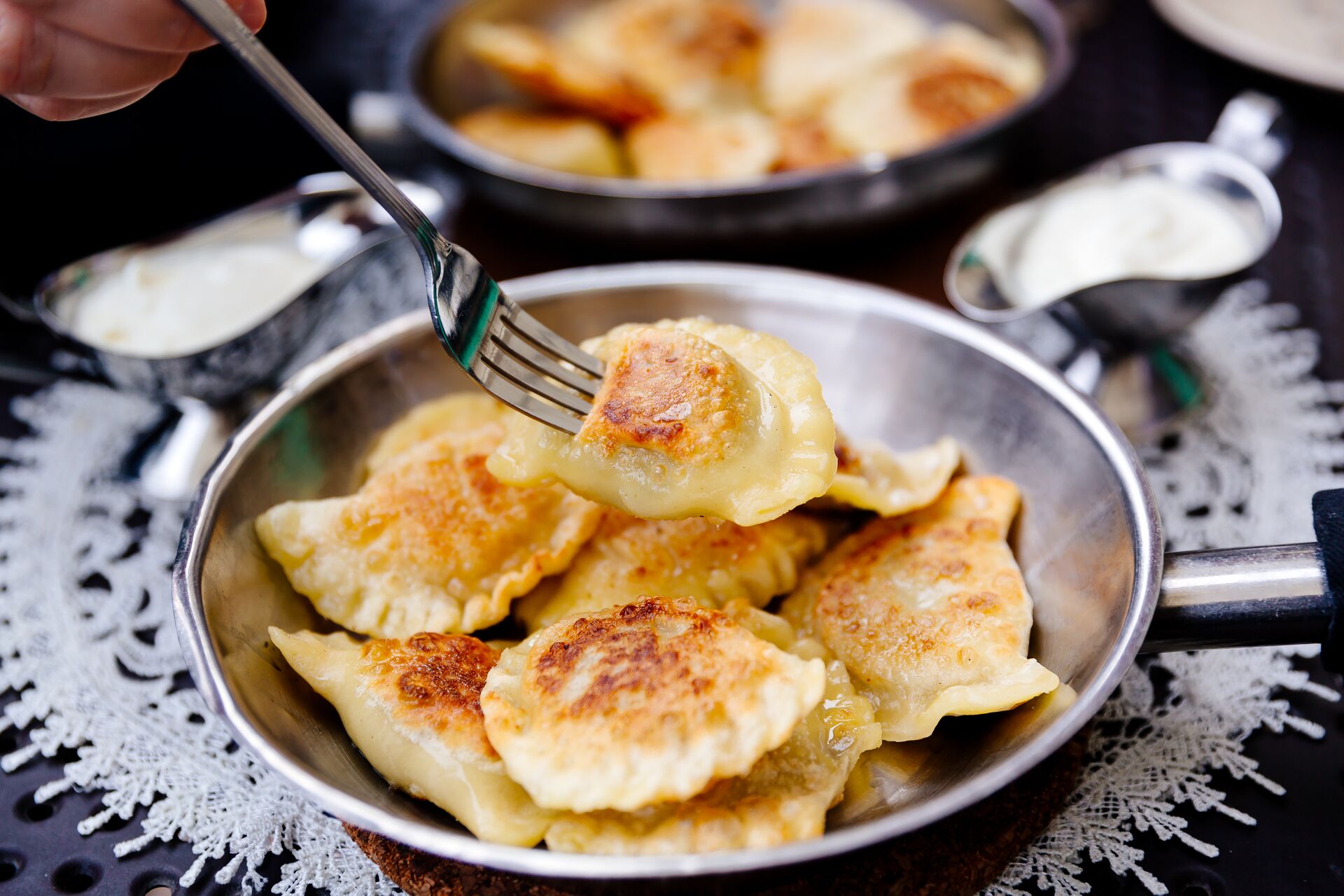
There is a patron saint of Pierogi – Saint Hyacinth
Although the “traditional” pierogi is known throughout the world, many travelers are pleasantly surprised to discover sweet pierogies filled with berries or other fruits as a dessert dish. Other famous Polish dishes include kielbasa, golabki (cabbage rolls), and borscht.
Here are three other popular Polish foods you’ve got to try when visiting Polska on an Insight Vacations tour like the Highlights of Eastern Europe.
Pickled Cucumbers
You’ve certainly seen a jar of Polish pickles in the grocery store. Unless you’re a connoisseur of briny fruits, you might not realize just how different Polish pickled cucumbers are from its kin. Bite into one and a strong, sour taste hits your tongue. These dill-heavy cukes aren’t the only thing pickled in Poland; don’t be surprised to see pickled cabbage, beetroot, and more on the menu. Prefer your cucumbers pre-pickled? Try mizeria: a cucumber salad with dill and sour cream.
Potato Pancakes
Though post-WWII Poland’s Jewish population is still growing, this country once had one of the highest Jewish populations in Europe. It’s no surprise, then, that the potato pancake is still a popular dish. Placki ziemniaczane have been on Polish plates since the 17th-century.
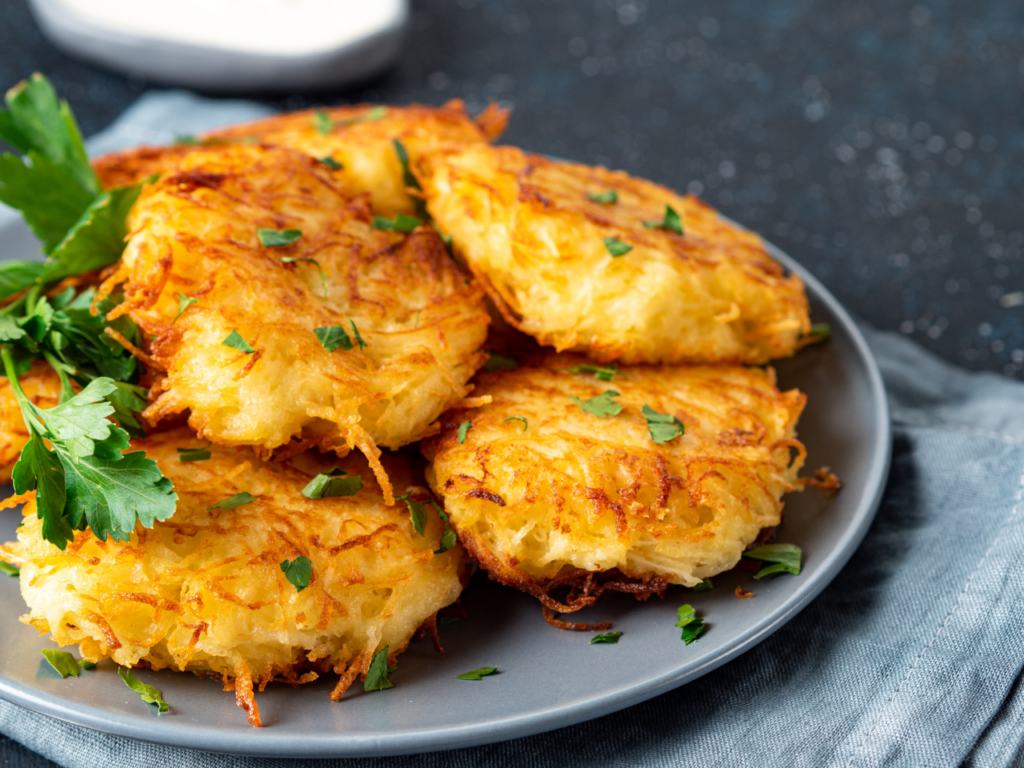
Placki ziemniaczane (potato pancakes) are one of Poland’s most popular dishes.
Pork Chops
Pork chops, or kotlet schabowy, is an easy-pleasing entry on any Polish menu. Its crispy breaded exterior and juicy interior will remind you of a schnitzel, but side dishes like beetroot soup make it known that you’re north of Austria.
Taste beloved Polish foods on The Bohemian, a 9-day tour of Poland, Czechia, and Austria.
What is Polish comfort food?
Polish comfort food is quite simple in ingredients yet small cooking techniques allow natural flavors to shine. Look no further than popular dishes like Polish-style eggs: a common boiled egg made flavorful when its yolk is mixed with herbs, spices, horseradish, and, the ever-present, mushrooms. Let’s take a look at other traditional Polish recipes that are held near and dear to locals’ hearts.
Flaki
Soups are a staple in Poland and flaki is one you’ll want to try. Beef tripe is the star of this Polish dish, and like other straightforward meals, the seasonings give the broth a bold flavor.
Zapiekanki
For the traveler new to the region, zapiekanki is arguably the most accessible of Polish foods. A toasted loaf of bread lays sliced in two, topped with cheese, meats, and mushrooms. It’s a Polish-style open-faced sandwich and an easy to eat street food.
Paczki
If you’ve got a sweet tooth, put a paczki on the top of your must-eat list. Deep-fried yeast dough covered in powdered sugar and filled with cream or jam makes the Polish doughnut perfect during morning, noon, or night.
Bigos
If you’re more of a stew fan than a soup fan, swap an order of flaki for bigos. This meaty stew lets pork marinate in a varied mix of cabbage, spices, and sauerkraut. Bigos is one of the oldest Polish comfort foods, dating back to medieval times.
SAVE UP TO $2,000 PER COUPLE* ON YOUR FIRST PREMIUM TOUR.
Plus receive latest offers, travel inspiration, and discover how your travels will make a positive impact. Together, WE MAKE TRAVEL MATTER®. Subscribe NowKielbasa
Fun fact: kielbasa is just the Polish word for sausage. In the United States, you may find a single Polish kielbasa, but in its homeland, you’ll find multiple types of sausage for sale.
There are few better places to try Polish sausage than in the capital. Sample some during our Warsaw and the Baltic States multi-country tour.
Rosol
Rosol is one food in Poland that’ll speak to your soul no matter where you come from. This chicken soup is everything you’d hope it would be: chunks of chicken swimming in a broth of spices and vegetables like onion, celery, and mushrooms.
Zurek
From one soup to another: zurek is sour rye soup. Fermented rye flour is mixed with water into a sour liquid. While the broth may be unique to other Polish soups, its ingredients are much more familiar: potatoes, mushrooms, meats, and other vegetables. Make sure you try a slice of Polish rye bread (chleb zytni) with your zurek.
Golabki
Golabki is a centuries-old dish in the region, dating back to the Middle Ages. Though the history of these “pigeons” aren’t necessarily as old in Poland itself, they have become a staple on the table for hundreds of years. These cabbage rolls are stuffed with minced meat, rice, onions, and spices, then baked in a tomato sauce.
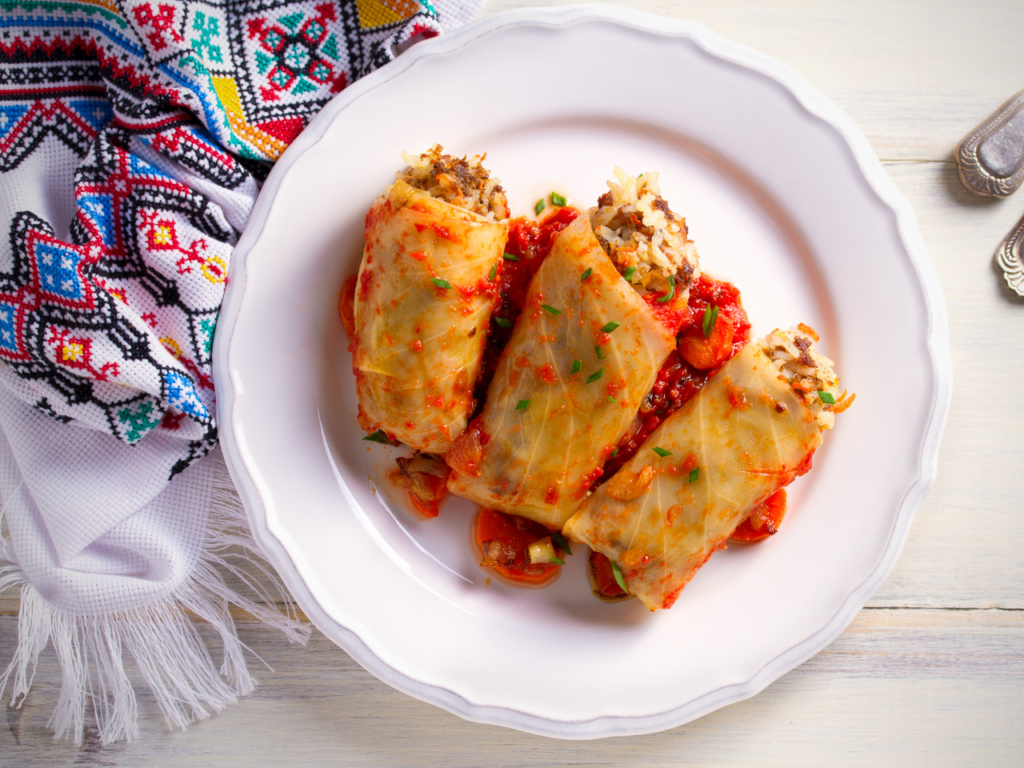
Golabki (stuffed cabbage rolls) have been around since the Middle Ages.
Makowiec
There are two ways that you can try Polish poppy seed dessert: in a roll as makowiec or as a bread pudding called makowki. Both are traditional desserts, though you may find that different fruits, jams, cheeses or nuts are more present in one than the other.
Kaszanka
For travelers with open mouths and minds, kaszanka is a taste of Poland’s culinary traditions. It’s essentially Polish blood sausage: minced pork offal are mixed with barley and pig’s blood, cooked in a casing, then fried and sliced. Even if you’ve never had a blood sausage elsewhere, the kaszanka won’t disappoint, particularly when you’re hungry for a hearty breakfast.
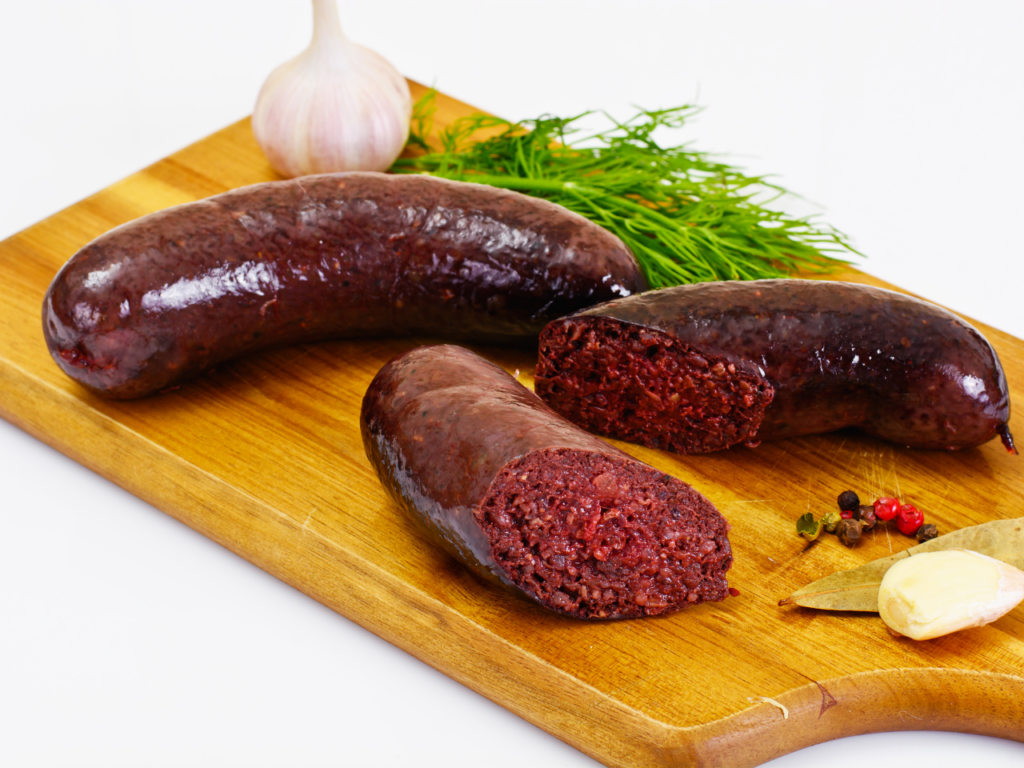
Kaszanka (blood sausage) is for more adventurous diners.
Sniff out these delicious foods on our 10-city Highlights of Poland tour.
What are the 12 dishes for Polish Christmas Eve?
Wagalia is the traditional Christmas Eve dinner in Poland featuring 12 dishes symbolizing the 12 Apostles of Jesus Christ. After sharing a platek wafer (similar to the Catholic altar bread), families and friends sit down for a mostly meat-free meal consisting of homecooked Polish foods like:
- Red Borscht (Barszcz)
- Mushroom Soup
- Pickled Herring
- Stuffed Cabbage (Golabki)
- Carp
- Pierogis
- Sauerkraut & Beans
- Cooked Wheat Pudding (Kutia)
- Dried Fruit Compote
- Gingerbread (Pierniki)
- Babka (Bread)
- Boiled Potatoes
This dozen dishes may vary from family to family as traditions evolved in each household over generations. For instance, meat may be included in the stuffed cabbage or pierogies. The stuffed cabbage may have a tomato or mushroom sauce and the fish may be baked or fried.
Taste these festive foods yourself during an 8-day adventure experiencing the Christmas Markets of Poland, Prague and Germany. Visit holiday markets in Krakow and Wroclaw where you’ll be treated to a traditional gingerbread tasting session.
Read next: More than Goulash: Top 20 Hungarian Dishes You Need to Try
LIKED THIS POST? SHARE WITH YOUR COMMUNITY

